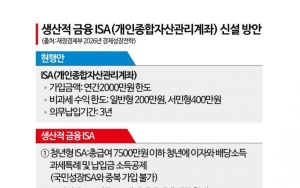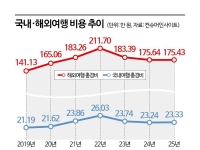[아시아경제 성정은 기자]지난 9일 열린 연방공개시장위원회(FOMC) 회의록 원문 내용 첫 번째.
Staff Review of the Economic Situation
The information reviewed at the August 9 meeting indicated that the pace of the economic recovery remained slow in recent months and that labor market conditions continued to be weak. In addition, revised data for 2008 through 2010 from the Bureau of Economic Analysis indicated that the recent recession was deeper than previously thought and that the level of real gross domestic product (GDP) had not yet attained its pre-recession peak by the second quarter of 2011. Moreover, the downward revision to first-quarter GDP growth and the slow growth reported for the second quarter indicated that the recovery was quite sluggish in the first half of this year. Overall consumer price inflation moderated in recent months, and survey measures of long-run inflation expectations remained stable.
Private nonfarm employment rose at a considerably slower pace in June and July than earlier in the year, and employment in state and local governments continued to trend lower. The unemployment rate edged up, on net, since the beginning of the year, and long-duration unemployment remained very high. Meanwhile, the labor force participation rate moved down further through July. Initial claims for unemployment insurance stepped down some in recent weeks but remained elevated, and indicators of hiring showed no improvement.
Manufacturing production was unchanged in June. Supply chain disruptions associated with the earthquake in Japan continued to hinder production at motor vehicle manufacturers and the firms that supply them. Excluding motor vehicles and parts, factory output posted only a modest increase. The manufacturing capacity utilization rate held about flat in recent months. With auto manufacturers expecting supply chain disruptions to ease, motor vehicle assembly schedules called for a substantial step-up in production in the third quarter, and initial estimates of production in June were consistent with such a step-up. But broader indicators of near-term manufacturing activity, such as the diffusion indexes of new orders from the national and regional manufacturing surveys, softened to levels consistent with only small gains in production in the coming months.
Real consumer spending was nearly unchanged in the second quarter. Motor vehicle purchases declined during the spring when the availability of some models was limited, but rebounded somewhat in July as supplies improved. Consumer spending on goods and services other than motor vehicles also appeared soft through June. Labor earnings rose in the second quarter, but increases in consumer prices offset much of the gain in nominal income. Consumer sentiment weakened markedly in July, and the Thomson Reuters/University of Michigan sentiment index fell to levels last seen in early 2009.
The housing market remained depressed. Although single-family housing starts moved up some in June, permit issuance stayed low. Similarly, sales of new and existing single-family homes were subdued in recent months, and home prices continued to trend lower. New construction remained constrained by the overhang of foreclosed or distressed properties as well as by weak demand in an environment of uncertainty about future home prices and tight underwriting standards for mortgage loans.
Real business spending on equipment and software rose at a modest pace in the second quarter, reflecting strong increases in outlays for high-tech equipment that more than offset declines in spending in many other equipment categories. Nominal new orders for nondefense capital goods excluding aircraft continued to rise through June, and orders remained well above shipments, suggesting further gains in outlays for equipment and software in the near term. However, indicators of business conditions and sentiment weakened in June and July. Business investment in nonresidential structures appeared to have stabilized at a low level in recent months, with vacancy rates elevated and construction financing conditions still tight. Outlays for drilling and mining equipment continued to increase. In the second quarter, businesses appeared to add to inventories at a moderate rate, as a drawdown in motor vehicle inventories associated with production disruptions was offset by higher accumulation elsewhere. In most industries outside of the motor vehicle sector, inventories seemed to be reasonably well aligned with sales.
Real federal purchases turned up in the second quarter, as defense expenditures rebounded after declining noticeably in the preceding quarter. At the state and local level, real purchases continued to decline in response to budgetary pressures; these governments continued to reduce payrolls, and their real construction outlays fell sharply.
The U.S. international trade deficit widened significantly in May in nominal terms, as exports edged down and imports moved up strongly. Declines in exports were concentrated in commodity-intensive categories such as industrial supplies and agricultural goods; sales of capital goods and automotive products increased. The rise in imports importantly reflected increases in spending on petroleum products (mainly the result of higher prices rather than increased volumes) and on capital goods, especially computers. For the second quarter as a whole, the advance release of the National Income and Product Accounts (NIPA) indicated that real exports of goods and services increased more than real imports, with the result that net exports added significantly to real GDP growth.
After decelerating in the preceding two months, indexes of U.S. consumer prices declined in June, reflecting a substantial drop in consumer energy prices. However, survey data indicated some backup in gasoline prices in July. The price index for personal consumption expenditures (PCE) excluding food and energy posted a small increase in June, and the PCE price index for non-energy services was essentially unchanged. In contrast, prices of nonfood, non-energy goods were apparently boosted by upward pressure from earlier increases in commodity and import prices, and motor vehicle prices rose further, reflecting the extremely low levels of vehicle inventories. Near-term expected inflation from the Thomson Reuters/University of Michigan Surveys of Consumers moved down again in July from its elevated level in the spring, and longer-term inflation expectations remained stable.
Nominal hourly labor compensation, as measured both by compensation per hour in the nonfarm business sector and by the employment cost index, increased at a moderate rate over the year ending in the second quarter. Similarly, the 12-month change in average hourly earnings of all employees remained moderate in July. Productivity in the nonfarm business sector rose only slightly over the past four-quarter period, so unit labor costs posted a modest increase.
Foreign economic growth appeared to have slowed significantly in recent months. Real GDP growth declined sharply in the United Kingdom in the second quarter, and industrial production data and purchasing managers surveys pointed to a similar slowdown in Canada. Retail sales and business sentiment for the euro area also weakened in recent months amid intensified concerns over the fiscal situation of the peripheral euro-area countries. Economic performance in the emerging market economies was somewhat better, but indicators for those economies also suggested some cooling from the very rapid growth earlier this year. By contrast, the Japanese economy has begun to recover from the March disaster, with exports and production both retracing much of their substantial losses. Foreign inflation dipped in the second quarter as the effects of previous increases in food and energy prices began to dissipate.
Staff Review of the Financial Situation
Over the intermeeting period, U.S. financial markets were strongly influenced by developments regarding the fiscal situations in the United States and in Europe and by generally weaker-than-expected readings on economic activity. Throughout the period, waxing and waning concerns about the sovereign debt of peripheral euro-area countries appeared to have an effect on investor appetite for risk, leading to volatility in many asset markets. Late in the period, investor focus appeared to turn to the U.S. debt ceiling and the potential for delayed debt service payments by the Treasury Department, the possibility of a downgrade of U.S. sovereign debt, and the prospects for significant long-term fiscal consolidation. Liquidity and funding in money markets deteriorated in the last week of July, and interest rates on a number of short-term funding instruments increased markedly. The strains in these markets eased after legislation to raise the debt ceiling and to cut the federal budget deficit was signed into law on August 2. U.S. equity prices fell considerably in the last week of July and the first week of August, reportedly reflecting recent weaker-than-expected economic data releases, and they declined further after the August 5 announcement by Standard & Poor's of its downgrade of long-term U.S. sovereign debt.
The decisions by the FOMC at its June meeting to complete its asset purchase program and to maintain the 0 to 1/4 percent target range for the federal funds rate were about in line with market expectations and elicited little market reaction; the same was true of the accompanying statement and the subsequent press briefing by the Chairman. Over the intermeeting period, investors marked down the expected path for the federal funds rate substantially, reflecting incoming economic data that were weaker than expected and concomitant concerns about the prospects for global growth. Yields on nominal Treasury securities also fell notably, on net, over the intermeeting period. The Federal Reserve's Treasury purchase program was completed on schedule on June 30.
Broad U.S. stock price indexes fell sharply, on net, over the intermeeting period, as increased concerns about economic growth appeared to overshadow generally strong second-quarter corporate earnings reports. Option-implied volatility on the S&P 500 index jumped late in the period. Yields on both investment- and speculative-grade corporate bonds fell a little less than those on comparable-maturity Treasury securities, leaving risk spreads wider. Financial market indicators of inflation expectations were mixed over the intermeeting period.
Net debt financing by nonfinancial corporations was solid in July, although below the elevated pace posted in the second quarter. Gross bond issuance fell, and the outstanding amount of commercial and industrial (C&I) loans on banks' books was about flat. Nonfinancial commercial paper (CP) posted a sizable gain. The market for CP issued by financial firms experienced some strains late in the period as institutional money market mutual funds reportedly increased their cash positions and sought to decrease exposure to CP issued by some entities perceived to be less creditworthy. Issuance of syndicated leveraged loans remained strong in the second quarter. The pace of gross public equity issuance by nonfinancial firms fell somewhat in July from its solid pace in the second quarter. Most indicators of business credit quality continued to improve.
Commercial real estate markets remained weak. Available data for the second quarter indicated that commercial mortgage debt contracted, prices of commercial properties were generally depressed, and issuance of commercial mortgage-backed securities (CMBS) slowed. However, the delinquency rate in June for loans that back existing CMBS stayed below its recent peak, and vacancy rates for commercial properties, while still high, generally continued to edge lower.
Rates on conforming fixed-rate residential mortgages declined, on net, over the intermeeting period. Mortgage refinancing activity picked up but remained relatively subdued. Outstanding residential mortgage debt is estimated to have contracted further in the second quarter. Rates of serious mortgage delinquency continued to moderate but remained high, while the rate of new delinquencies on prime mortgages flattened out in recent months at an elevated level.
Conditions in consumer credit markets generally continued to improve. Total consumer credit expanded at a moderate rate in May as both nonrevolving and revolving credit posted gains. Issuance of consumer asset-backed securities remained solid in July, although some deals later in the month were reportedly postponed a few days while issuers awaited the outcome of the debt ceiling deliberations. Delinquency rates for most types of consumer loans moved down in recent months.
Core commercial bank loans--the sum of C&I, real estate, and consumer loans--were about flat over the months of June and July, as a slowdown in lending to businesses was offset by a pickup in loans to households. The July Senior Loan Officer Opinion Survey on Bank Lending Practices showed that respondents again eased lending standards to some degree on all major loan types other than residential real estate loans. Nonetheless, banks also indicated that the current levels of their lending standards for all loan types were between moderate and relatively tight when compared with the range of standards that had prevailed since 2005. Nearly all second-quarter earnings reports from large banking companies exceeded expectations.
M2 expanded rapidly in June and July. Liquid deposits, the largest component of M2, increased robustly, likely reflecting safe-haven flows from riskier assets along with temporary increases in the amount of deposits that money market mutual funds held at their custodian banks. The rise in currency moderated over those two months but remained robust.
Headline equity indexes abroad and foreign benchmark sovereign yields declined over the intermeeting period in apparent response to signs of a slowdown in the pace of global economic activity and reduced demand for risky assets. At the same time, concerns about fiscal deficits and debt sustainability drove yields on the sovereign debt of Greece, Ireland, Portugal, Spain, and Italy to record highs relative to yields on German bunds, although later in the period, spreads fell back somewhat. Stock prices of European banks, which are significant investors in sovereign bonds issued by the peripheral euro-area countries, declined appreciably, and some of these banks reportedly faced tighter funding conditions toward the end of the intermeeting period. The broad nominal index of the U.S. dollar fluctuated over the period in response to changes in investors' assessment of the outlook for the U.S. economy, prospects for the lifting of the U.S. debt ceiling, and the situation in the European economies. On net over the intermeeting period, the dollar rose modestly after having depreciated earlier this year.
The European Central Bank (ECB) boosted its policy rate in July, a move that was widely anticipated. As indicated by money market futures quotes, however, the expected pace of monetary policy tightening declined substantially for the ECB as well as for other central banks in advanced foreign economies. Following its August meeting, the ECB expanded and extended its offerings of term liquidity and resumed purchases of sovereign debt in the secondary market. Central banks in several emerging market economies, including China, continued to tighten policy in response to inflationary pressures. Authorities in some emerging market economies also took measures to limit capital inflows and credit growth.
Staff Economic Outlook
The information on economic activity received since the June FOMC meeting was weaker than the staff had anticipated, and the projection for real GDP growth in the second half of 2011 and in 2012 was marked down notably. Moreover, the lower estimates of real GDP in recent years that were contained in the annual revisions to the NIPA led the staff to lower its estimate of potential GDP growth, both during recent years and over the forecast period, and to mark down further the staff forecast. The staff continued to expect some rebound in economic activity in the near term as the Japan-related supply chain disruptions in the motor vehicle sector eased. More generally, the staff still projected real GDP to accelerate gradually over the next year and a half, supported by accommodative monetary policy, improved credit availability, and a pickup in consumer and business sentiment. However, the increase in real GDP was projected to be sufficient to reduce slack in the labor market only slowly, and the unemployment rate was expected to remain elevated at the end of 2012.
The staff raised slightly its projection for inflation during the second half of this year, as the upward pressure on consumer prices from earlier increases in import and commodity prices was expected to persist a little longer than previously anticipated. But these influences were still expected to dissipate in coming quarters, as was the temporary upward pressure on motor vehicle prices from low inventories. Moreover, the large increases in consumer energy and food prices seen earlier this year were not expected to be repeated. With long-run inflation expectations stable and substantial slack expected to persist in labor and product markets, the staff continued to expect prices to rise at a subdued pace in 2012.
Participants' Views on Current Conditions and the Economic Outlook
In their discussion of the economic situation and outlook, meeting participants regarded the information received during the intermeeting period as indicating that economic growth so far this year was considerably slower than they had expected. Participants noted a deterioration in labor market conditions, slower household spending, a drop in consumer and business confidence, and continued weakness in the housing sector. Manufacturing activity was reported to be mixed. Participants judged that temporary factors affecting demand and production, including the damping effect of higher energy and other commodity prices and the supply disruptions from the Japanese earthquake, could account for only some of the weakness in economic growth over the first half of the year. While these effects appeared to be waning, the underlying strength of the economic recovery remained uncertain. In addition, many participants pointed to the recent downward revision to estimates of economic activity over the past three years, and some to the financial market strains seen during the intermeeting period, as contributing to a downgrade of the outlook for the economy. More-over, many participants saw increased downside risks to the outlook for economic growth.
Meeting participants generally noted that overall labor market conditions had deteriorated in recent months. While the employment report for July showed that hiring was somewhat better than in previous months, the release was still seen as indicating relatively weak conditions. A couple of participants commented that the exceptionally high level of long-term unemployment could lead to permanent negative effects on the skills and employment prospects of those affected. Another participant, however, noted that it could instead reflect a mismatch between the characteristics of the unemployed and the jobs currently available. Participants also discussed the labor force participation rate, and it was noted that extended unemployment benefits could be increasing the measured unemployment rate by encouraging some workers to remain in the labor force longer than they otherwise would have. Other participants remarked that the declines in the unemployment rate that have occurred over the past year appeared to reflect primarily declines in labor force participation rather than significant gains in employment. Reports from business contacts suggested that depressed business confidence as well as uncertainty regarding the economic outlook, regulatory policy, and fiscal policy continued to restrain hiring and also capital investment.
Inflation had moderated in recent months after having been somewhat elevated earlier this year. Transitory factors, including supply chain disruptions from the earthquake in Japan and a surge in energy and other commodity prices, had pushed up both headline and core measures of inflation for a time. More recently, however, as prices of energy and some commodities have declined from their earlier peaks, headline inflation has moderated. Participants generally noted that, with apparently significant slack in labor and product markets, slow wage growth, and little evidence of pricing power among firms, inflation was likely to decline somewhat over time. Measures of inflation expectations had remained stable. Nevertheless, a number of participants noted that core inflation had moved up, on balance, since last fall. Some indicated that the rise in inflation from very low levels reflected the Committee's accommodative stance of monetary policy, which had helped address the deflation risks of a year ago. A couple of others, however, suggested that the juxtaposition of higher core inflation and somewhat lower unemployment could imply that the level of potential output was lower than had been thought.
Most meeting participants indicated that the weakness in consumer spending in recent months was unexpected. The flattening out of consumer spending was seen as reflecting, in part, the modest pace of gains in employment and labor income. In addition, household spending on autos had been held back by low inventories, and participants generally expected a pickup in sales of motor vehicles in coming months as production rebounded. Nonetheless, low consumer confidence, efforts to rebuild balance sheets, and heightened caution on the part of households facing an uncertain economic environment were seen as factors likely to continue to weigh on household spending going forward. Several participants also pointed to financial constraints, particularly depressed home prices and still-tight credit conditions, as further restraining consumer spending for a time.
Business outlays on equipment and software continued to advance, although at a slower pace than earlier in the year. Business contacts in many parts of the country reported that uncertainty about the pace of growth in coming quarters and a general slump in business confidence had made some firms reluctant to expand capacity. With home prices depressed, housing construction was quite subdued and seen as likely to remain so, while investment in nonresidential structures remained low.
The weakness in household and business spending was accompanied by fiscal consolidation at the state and local level. The shedding of state and local government jobs contributed to the deterioration in overall labor market conditions. Some policymakers noted that their outlooks for economic activity were shaped in part by an expectation of fiscal restraint at all levels of government.
Participants generally saw the degree of uncertainty surrounding the outlook for economic growth as having risen appreciably. A couple noted that the cyclical impetus to economic expansion appeared to be weaker than it had been in past recoveries, but that the reasons for the weakness were unclear, contributing to greater uncertainty about the economic outlook. Many participants also saw an increase in the downside risks to economic growth. While participants did not anticipate a downturn in economic activity, several noted that, with the recovery still somewhat tentative, the economy was vulnerable to adverse shocks. Potential shocks included the possibility of a more protracted period of weakness in household financial conditions, the chance of a larger-than-expected near-term fiscal tightening, and potential financial and economic spillovers if the situation in Europe were to deteriorate.
Participants noted that financial markets were volatile over the intermeeting period, as investors responded to news on the European fiscal situation and the negotiations regarding the debt ceiling in the United States. However, the broad declines in stock prices and interest rates over the intermeeting period were seen as mostly reflecting the incoming data pointing to a weaker outlook for growth both in the United States and globally as well as a reduced willingness of investors to bear risk in light of the greater uncertainty about the outlook. While conditions in funding markets had tightened, it was noted that the condition of U.S. banks had strengthened in recent quarters and that the credit quality of both businesses and households had continued to improve.
Participants discussed the range of policy tools available to promote a stronger economic recovery should the Committee judge that providing additional monetary accommodation was warranted. Reinforcing the Committee's forward guidance about the likely path of monetary policy was seen as a possible way to reduce interest rates and provide greater support to the economic expansion; a few participants emphasized that guidance focusing solely on the state of the economy would be preferable to guidance that named specific spans of time or calendar dates. Some participants noted that additional asset purchases could be used to provide more accommodation by lowering longer-term interest rates. Others suggested that increasing the average maturity of the System's portfolio--perhaps by selling securities with relatively short remaining maturities and purchasing securities with relatively long remaining maturities--could have a similar effect on longer-term interest rates. Such an approach would not boost the size of the Federal Reserve's balance sheet and the quantity of reserve balances. A few participants noted that a reduction in the interest rate paid on excess reserve balances could also be helpful in easing financial conditions. In contrast, some participants judged that none of the tools available to the Committee would likely do much to promote a faster economic recovery, either because the headwinds that the economy faced would unwind only gradually and that process could not be accelerated with monetary policy or because recent events had significantly lowered the path of potential output. Consequently, these participants thought that providing additional stimulus at this time would risk boosting inflation without providing a significant gain in output or employment. Participants noted that devoting additional time to discussion of the possible costs and benefits of various potential tools would be useful, and they agreed that the September meeting should be extended to two days in order to provide more time.
성정은 기자 jeun@
<ⓒ투자가를 위한 경제콘텐츠 플랫폼, 아시아경제(www.asiae.co.kr) 무단전재 배포금지>







!["아내는 연상…원더우먼 같았다" 유산·가난 속에서 함께 버틴 박홍근 의원 '인생 최고의 반석' [배우자 열전]②](https://cwcontent.asiae.co.kr/asiaresize/319/2026010811050883808_1767837908.jpg)
![동갑내기 캠퍼스 커플…"예뻐보이더라" 정원오, 배우자 문혜정 첫 인상[배우자 열전]①](https://cwcontent.asiae.co.kr/asiaresize/319/2026010808171783102_1767827837.jpg)










![[속보]靑](https://cwcontent.asiae.co.kr/asiaresize/308/2026010108523575610_1767225155.png)